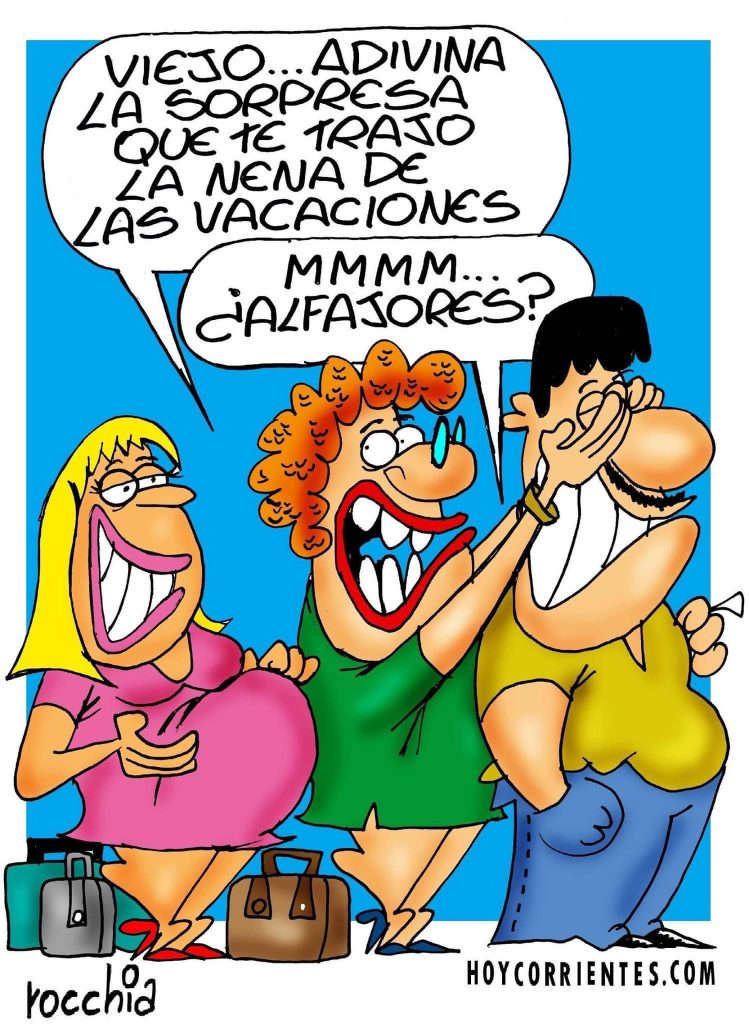
– Dear, guess
the surprise the kid brought you from her holidays.
– Mmm…
Stuffed doughnuts?
This is the second time I use a cartoon by the Argentinian author Fernando Rocchia for my blog. This time I will illustrate not only two other peculiarities of Latin American Spanish, but also how to translate a culinary product.
Firstly, let’s focus on the word “viejo“, which literally means “old”. I had already talked about it in my previous article where I said that it may mean “friend”, but in this cartoon we come across another meaning. In fact, it can be used to get someone’s attention; here, the woman uses it to address her husband. So, given that the protagonists are a married couple, I’ve chosen to translate it as “dear”. Moral of the story: always pay close attention to words translation, as it can be misleading, not only depending on the context, but also on the country we are in.
Secondly, “nena” is a – let’s say almost universal in the Spanish-speaking world – word to refer to a young and dear person affectionately and colloquially. This is why I’ve translated it as “kid”, a word used by English people to speak of a family member, be it a daughter or a granddaughter (even when she is already an adult ?).
Last but not least, the alfajores. These are sweets made of two biscuits joined by a sweet filling (usually dulce de leche, a sweet cream made with milk and sugar). Since they are typical of South America, it is difficult to translate them into another language. However, in the UK doughnuts and cream puffs are very similar to alfajores, if not in taste, at least in being sweets filled with cream. Before choosing how to translate this word, we also have to take into account the image of the daughter with child. Obviously dad hasn’t seen she’s back pregnant yet, but it’s clear that alfajores allude to her daughter’s roundness and her belly’s bulge ?. Consequently, I believe that stuffed doughnuts are an excellent equivalent to convey these features of the pregnant woman.